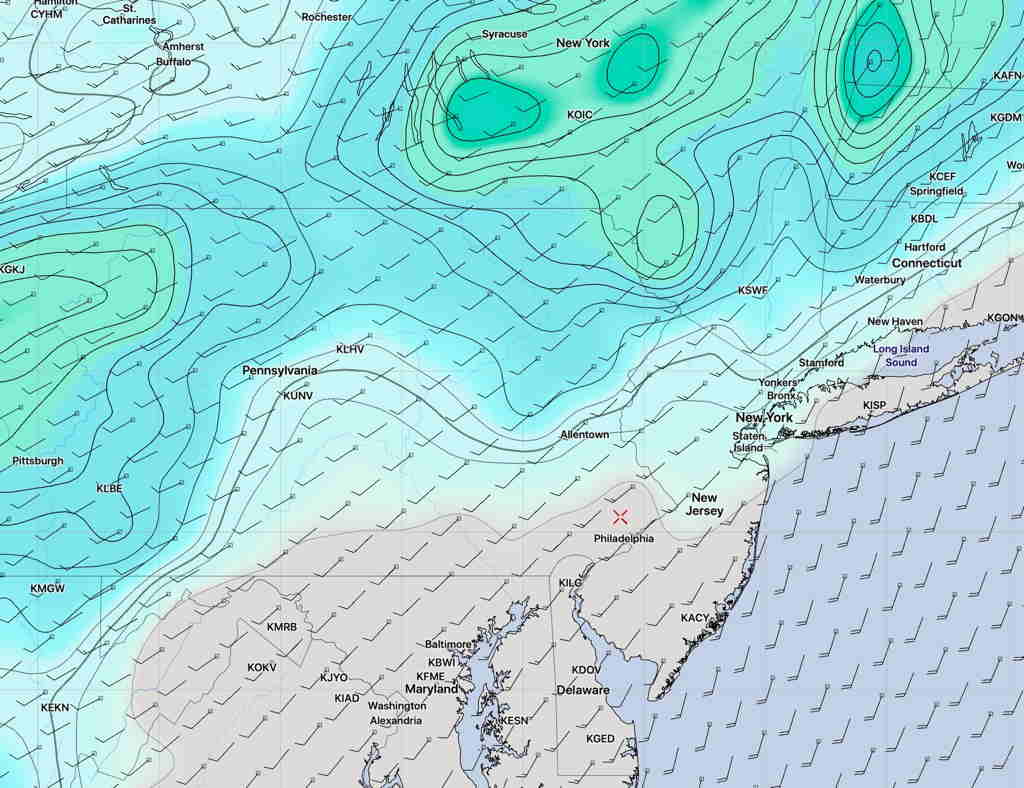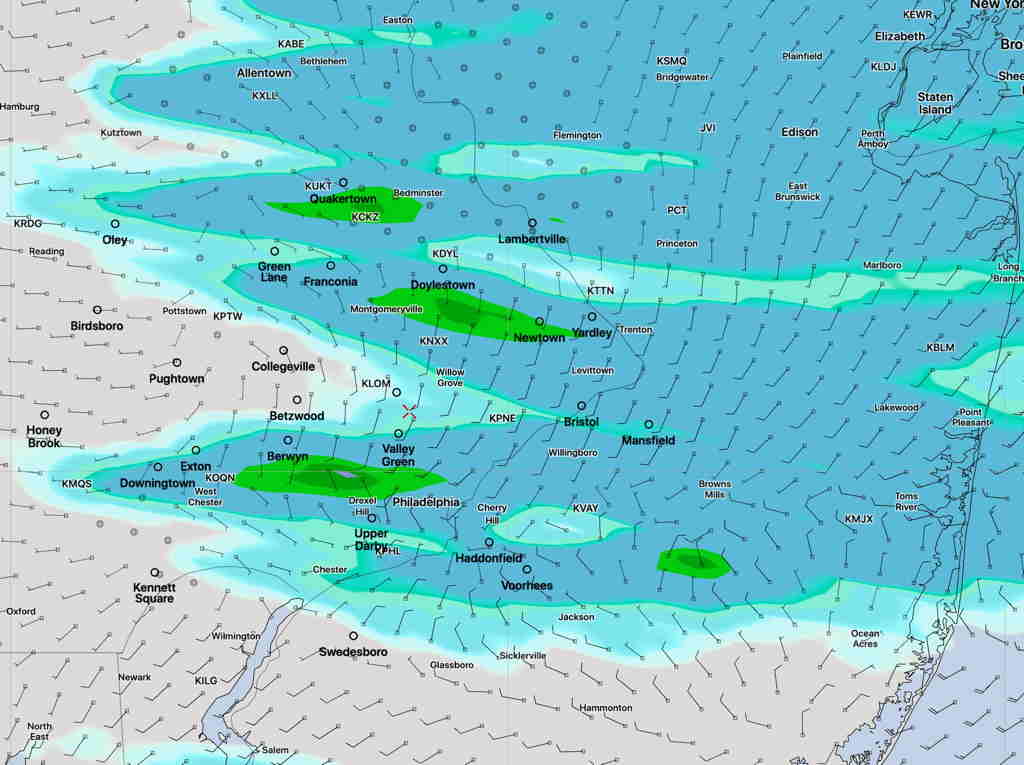[su_note note_color=”#defcdc”] Updated Fri 05:15 PM —An interesting announcement from NOAA about the strangely large standard deviation on the NBM model today—
“Navy FNMOC updated their data distribution software on Wednesday, and there are some issues that have resulted in values of NAVGEMD being about 40F too cold.Thus, the large spike in standard deviation fields for NBM that have been seen are caused by that model.NCO is in the process of removing the NAVGEMD as an input to NBM today so that it can run without this issue over the weekend.”
[/su_note]
The upcoming weekend forecast has a higher than usual level of uncertainty.
First, most of the scattered storms missed the immediate PHL area yesterday, the subject of my previous post about a persistent weather pattern.
So we’re having a conjectured persistent weather “pattern” of having storms repeatedly shear off to the north and west coming against a number of ingredients that add up to potentially moderate to severe thunderstorms for our area Saturday afternoon.
For several days, the statistical models (“Ensemble” models) – GEFS and the SREF – continue to forecast the thunderstorms moving off to our north and west. The deterministic models, the GFS, NAM CMC, suggest the possibility of moderate to severe thunderstorms making it into the PHL area.


The uncertainty in the forecast is captured by the extremely large standard deviation (sd) in the model blend forecast high temperature for Saturday— 89º sd 10.5º (this standard deviation of 10.5º is 1 – 2 times the usual spread of 1º or 2º). In fact, I haven’t see the sd as high as this in long while.
So this means there’s a lot of spread in the various model forecasts that comprise the national model blend (NBM). The two graphics above show the differences in the placement of the storms.
Too early to tell. I’ll update later this evening.
